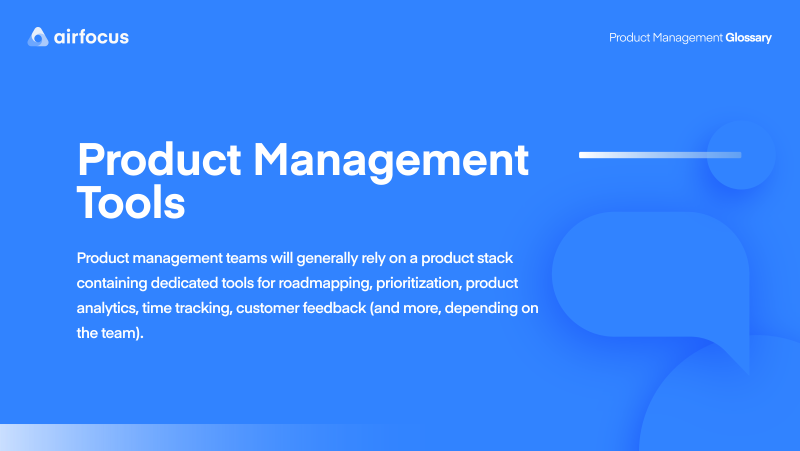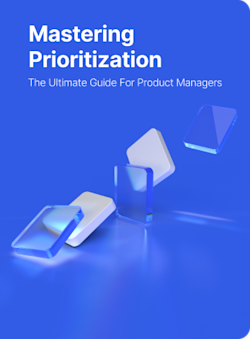Product Management Tools
What are product management tools?
Product Management Tools Definition
Product management teams will generally rely on a product stack containing dedicated tools for roadmapping, prioritization, product analytics, time tracking, customer feedback (and more, depending on the team).
Developing digital products from scratch is no easy task — it requires a cohesive team, a clear objective, and, of course, the right tools for the job. While all product development cycles are different, product management tool stacks are similar from company to company. From staying in touch to staying on track, these product management tools help team members achieve their short and long term goals.
Product management tools: What should your product stack include?
As we’ve covered, different teams have different requirements from their product development process, but there’s plenty of crossover.
With that in mind, here are a few examples of the types of tools that key members of a product development team might have on hand:
Collaboration and communication tools. Teamwork can’t happen without strong communication, so digital platforms — like Slack and Microsoft Teams — serve as central hubs for product managers to keep in touch.
Roadmapping software. Whether it’s a product roadmap, marketing roadmap, technology roadmap, or anything else, the product team needs a source of truth for the development timeline — just like airfocus.
Here is a list of 9 best product roadmap software compared.
Project tracking tools. Along with the roadmap, product teams need to be able to track individual tasks and stories as part of the development process. This is where platforms such as Jira, Trello, Asana, and even airfocus will come into play.
Customer surveying tools. When developing and testing new features, product teams must solicit feedback from existing and test users, and survey platforms allow them to do this at strategic moments within the UI and the overall development cycle.
Heatmapping software. Heatmaps allow product teams to understand exactly how end users are interacting with key features, and heatmapping software allows them to record and analyze the results.
How to choose the right product management tool for you
Picking the right product management tools for your team is really about properly assessing the size, scale, and developmental stage of your product team.
For example, if the product is pre-alpha and doesn’t have an existing version on the market, using analytics tools to assess current usage levels won’t be very useful. So, the first thing to do is to review the team’s current progress and decide which specific areas need the support of a dedicated tool.
Next up, consider the budget of the product development process: what can you afford to invest in, and what will you need to boot-strap a bit? Just like you’ll do with your roadmap, this is about prioritizing what matters — and what doesn’t — about the development lifecycle.
If you’re not sure if you really need a particular tool, don’t be afraid to do some live testing. If your product team really needs that tool to do their job well, don’t worry, they’ll tell you.

General FAQ

Glossary categories
Prioritize with confidence

Experience the new way of doing product management








